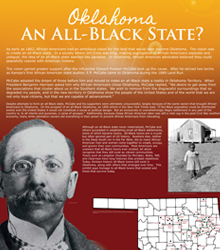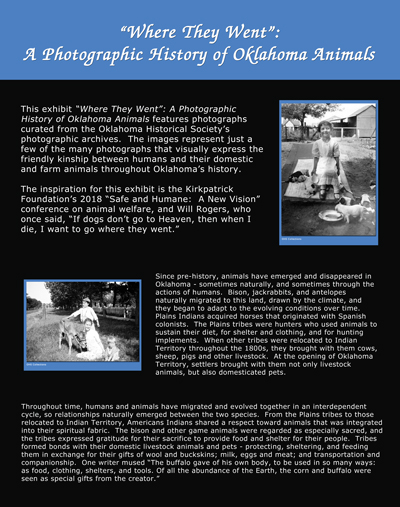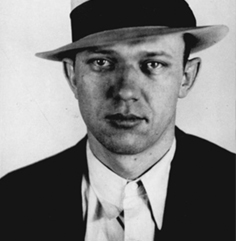
Oklahoma History Center Traveling Exhibits
Oklahoma History Center traveling exhibits bring Oklahoma history and culture to communities across the state and country. Please contact the venue listed for more information.

All-Black Towns of Oklahoma
Shortly after the 1889 Land Run opened the Oklahoma Territory to settlement, black leaders hoped to make the newly-opened lands a home for oppressed African Americans throughout the United States. Oklahoma was promoted as the land where African Americans could come for the dream of self-government. As many as fifty communities arose where only African Americans lived and governed themselves. Even though “Jim Crow” became the law of the land after statehood, All-Black towns survived and continue to thrive in modern Oklahoma.
On Exhibit
Norman Public Library West
Norman, Oklahoma
December 2024
Norman Public Library East
Norman, Oklahoma
January 2025

“Where They Went”: A Photographic History of Oklahoma Animals
The exhibit “Where They Went”: A Photographic History of Oklahoma Animals features photos curated from the Oklahoma Historical Society’s Photograph Archives. The images in this exhibit represent just a few of our many images that express the friendly relationship between humans and their domestic and farm animals throughout Oklahoma’s history.
Funding for this exhibit was provided by the Kirkpatrick Foundation.
On Exhibit
Pawnee Bill Ranch and Museum
Pawnee, Oklahoma
through mid-January 2025

Wanted: Dead or Alive
This photography exhibit features images of some of Oklahoma’s most infamous criminals. Images from the Federal Bureau of Investigation, the University of Oklahoma Western History Collections, the National Archives, and the Oklahoma Historical Society include mugshots, crime scene locations and group shots with criminals, and law enforcement officers. They span more than 70 years, starting before statehood in 1907 and reaching into the late 1950s.
On Exhibit
Pawnee Bill Ranch and Museum
Pawnee, Oklahoma
March–April 2025
Bring Oklahoma History Center Exhibits to Your Community
The Oklahoma History Center offers several traveling exhibits on a variety of topics.
Learn about booking our traveling exhibits »

